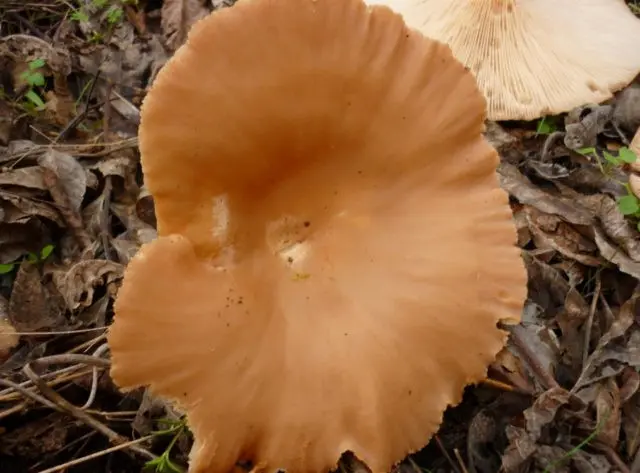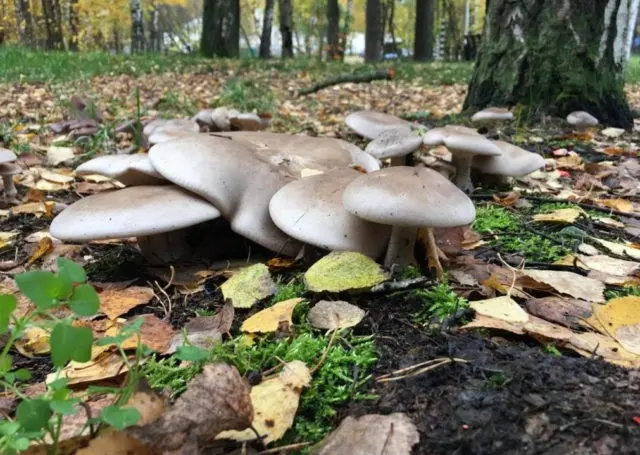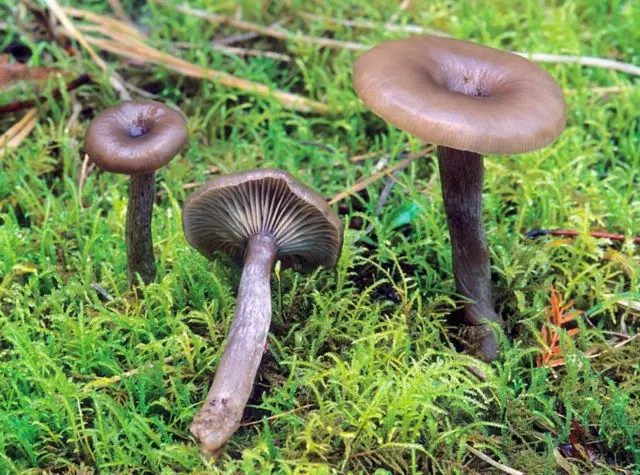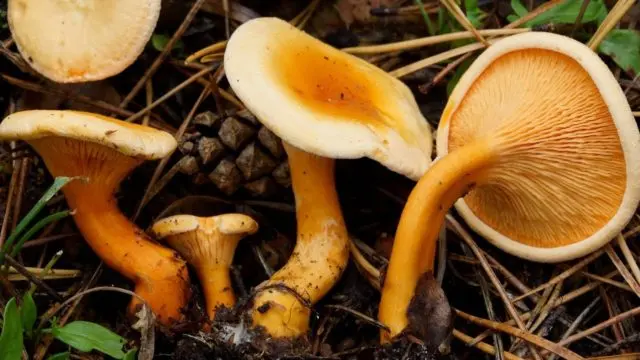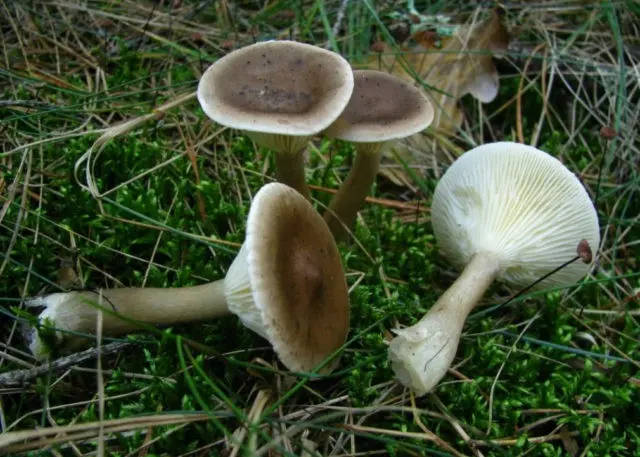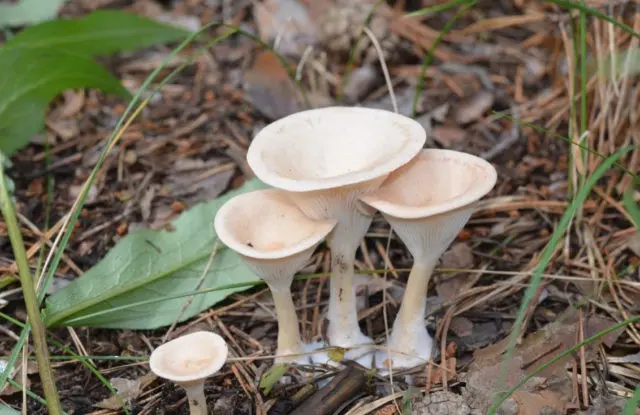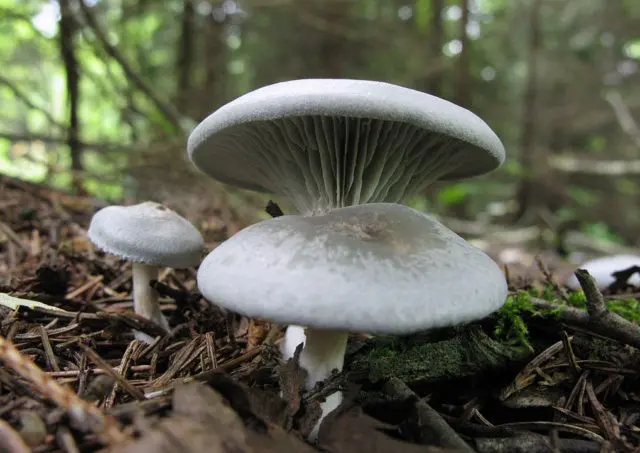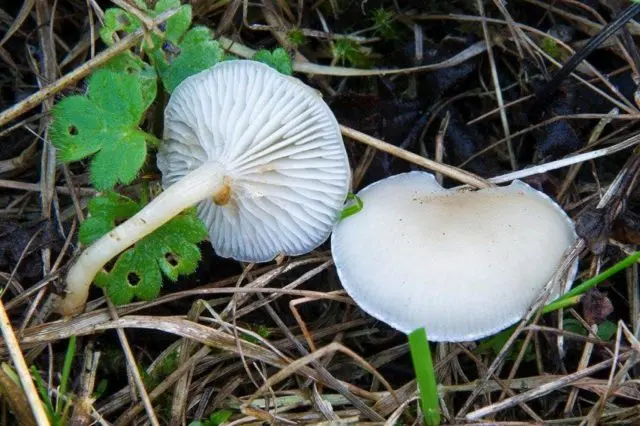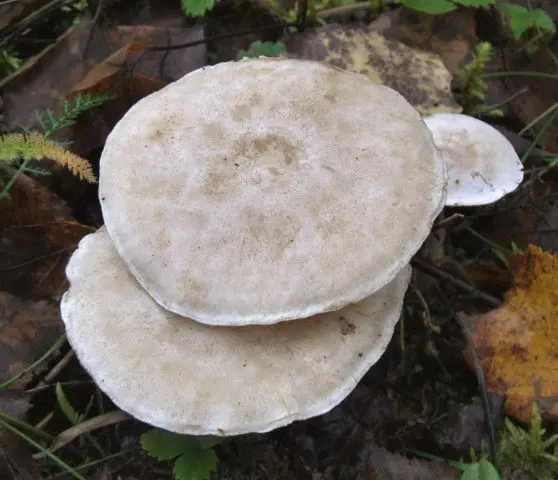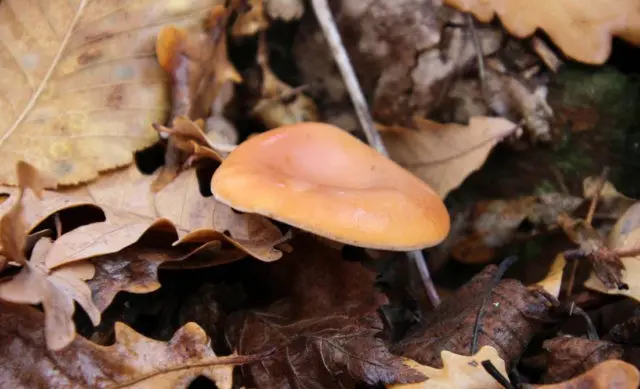Contents
Talkers are a common type of mushroom, including both edible and poisonous specimens. They are used to prepare many dishes, so they should be collected with great care. A photo and description of talker mushrooms will help not to make a mistake when collecting.
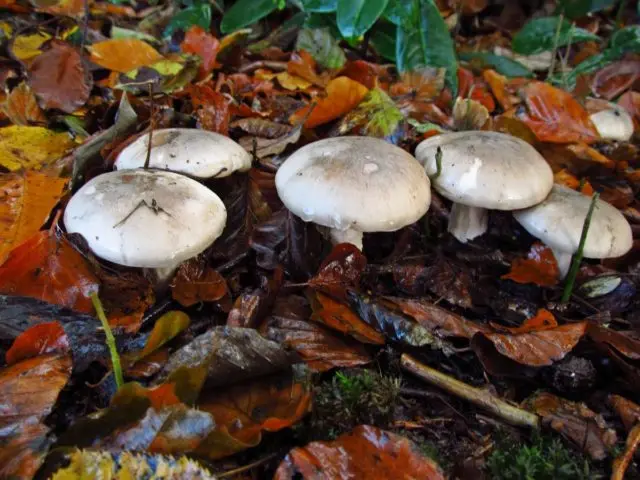
Where talkers grow
Talker mushrooms can be found in almost all countries with a temperate climate – Eastern and Western Europe, China, Turkey, the USA, etc. They live in coniferous forests, as well as in fields and meadows, but the optimal conditions are surrounded by deciduous trees.
This type of mushroom grows in clusters, forming the so-called “witch’s circle”, when the mushrooms are placed along the diameter of the circle with an empty space in the middle.
What do talkers look like
The cap of this mushroom is modest in size – its diameter is 4-8 cm, in rare specimens it grows up to 15-20 cm. In young ones, it looks like a hemisphere, with time it becomes flat, and in old ones it may have a funnel in the center.
The surface of the cap is dry and even, has a brown-gray, ocher, beige or brownish-pink color. Color saturation decreases from the middle to the edges. Sometimes on the surface you can see the remnants of mycelium, resembling mold spots.
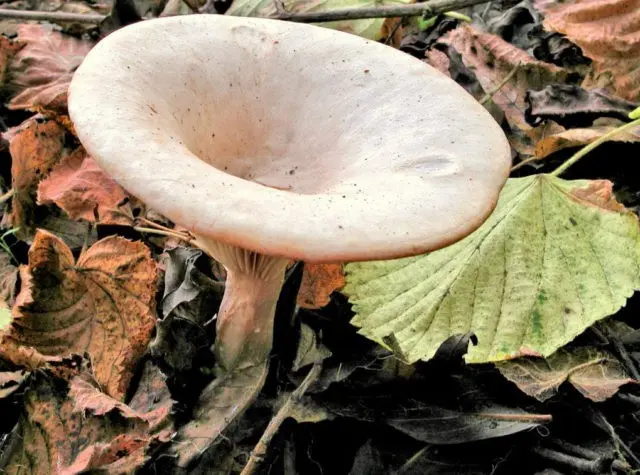
The plates on the inside of the cap are usually white. The older the mushroom, the closer their shade is to yellow.
The leg of various types of talkers can have a height of 4 to 10 cm and a diameter of 1-3 cm.
The flesh of young specimens is quite dense, white in color, as the fungus ages, it becomes drier.
The spore powder is white or cream in color.
Types of talkers
More than 250 species of fungus belong to the genus. About 60 different talkers are known and studied on the territory of our country. Among them you can find both completely edible and very poisonous. Therefore, it is necessary to have a good idea of uXNUMXbuXNUMXbwhat a particular species looks like and whether it is safe to collect it. This will help photos of edible talkers and their poisonous counterparts.
The most common types of talkers:
- Talker bent – an edible species with a wide hat, the size of which can reach 18 cm, gray-yellow in color. In young mushrooms, the hat is slightly convex, in old mushrooms it is funnel-shaped with a rise in the middle. The plates are frequent, white. The leg is strong, the same color as the cap, 12-20 cm high and up to 3 cm thick. The flesh is white, in older mushrooms it is brownish. In the upper part it is strong and elastic, and on the leg it is more porous and dryish. Such a talker can grow both as individual fungi and in groups in the form of large circles. It can be found in deciduous forests and on the edges. The harvest period is from late summer to October. It has a poisonous counterpart – entoloma, but unlike the bent govorushka, the entoloma’s hat is flat, and the flesh has an unpleasant rancid odor.

- Talker gray or smoky – edible mushroom. The hat, like that of other varieties, is initially domed, and over time becomes even with a small depression. The color of the cap is light gray or brownish. The plates are frequent, white or yellow with a grayish tint. The lower part of the fruit body is strong, low, 3-4 cm thick, white-gray. The pulp of the cap is strong and juicy, and the legs are drier, it has a sharp soapy smell. It lives in deciduous or coniferous forests, often in large groups. The fruiting period is from August to the end of autumn.Attention! Despite the fact that the smoky talker is an edible mushroom, its use without prior digestion for half an hour can provoke an eating disorder.

- goblet talker – edible mushroom. His hat is shaped like a cup or glass with the edges bent outwards. Cap size 5-8 cm, brown or brownish-gray. The plates are sparse, brown. The leg is hollow, 9-12 cm high. The pulp of the fungus is watery, off-white. Grows in forests among fallen leaves or needles. The period of active growth is August-September.

- Orange talker (otherwise false chanterelle) – an edible mushroom with a funnel-shaped hat with curved edges of bright orange color. The leg is also orange, smooth, 5-8 cm high. They grow singly or in small groups in mixed or coniferous forests among moss and leafless leaves. The fruiting period is from August to October.

- Mace-footed warbler – conditionally edible mushroom. The hat in young specimens is spherical, while in more mature specimens it is in the form of a funnel, brown or gray-brown in color, 6-8 cm in size. The plates are rare, cream-colored. The leg is club-shaped, which gave the name to the species, fibrous grayish-brown, no more than 7-8 cm high. The pulp is thin, moist, with a slight smell of flour. It lives in coniferous or mixed forests, single specimens or several pieces. The fruiting period is from August to October.Attention! The mushroom is conditionally edible, so before cooking it must first be boiled and drained. When combined with alcohol, it becomes poisonous.

- Funnel-shaped or funnel-shaped talker – conditionally edible mushroom, the most common variety. The hat is initially flat with a rise in the center, and as it grows, it takes the form of a funnel. The size of the cap does not exceed 7-8 cm. The color is yellowish-brown. The plates of this species are frequent, descending along the stem. The lower part of the fruiting body is thin, hard, 8-10 cm high. The mushroom grows singly or in groups in forests on a litter of fallen foliage or needles. The fruiting period is from August until the start of frost. Only young specimens can be used for food, first boiling them for at least an hour.

- Aniseed or fragrant talker – an edible, rare mushroom. The hat, like that of other “relatives”, is slightly curved at first, and as it grows, it becomes cup-shaped. Coloration grey-green. The plates are white or pale green in color, adherent to the base. The leg is gray-yellow, the size does not exceed 6 cm. The pulp is pale green, watery, with a pronounced smell of anise. Grows in mixed forests in several pieces. The fruiting period is from late summer to October.
 Attention! The mushroom requires mandatory boiling, as a result of which the characteristic anise flavor becomes weaker.
Attention! The mushroom requires mandatory boiling, as a result of which the characteristic anise flavor becomes weaker. - Whitish talker – a small poisonous mushroom. The diameter of the cap does not exceed 5 cm. The shape is arched at first, and in mature mushrooms it is slightly depressed with uneven edges lowered. Color – white with a grayish tint, the surface is even and dry. The plates are also white or grayish, adherent. The lower part of the fruiting body is thin cylindrical, 3-4 cm high, white or cream in color. It grows most often in meadows or forest edges. The mushroom is very poisonous due to the significant content of the alkaloid muscarine and is categorically not suitable for food.

- Waxy talker – poisonous agaric mushroom. The cap of young mushrooms is flat with a tubercle in the center. And over time, it takes on a depressed shape. The surface is smooth, light gray in color, in rainy weather acquiring a darker shade. The plates are descending, cream-colored. The grayish-white leg has an even cylindrical shape and a height of up to 4-6 cm, the flesh is dense with a pungent odor. This species grows in open forest areas singly or in groups. The growth period is from July to September. The mushroom is highly poisonous and can cause severe food poisoning.

- Red-brown talker – a poisonous mushroom with a funnel-shaped cap of a reddish-brown or reddish hue with a diameter of 6-8 cm. The plates are frequent, descending, cream or yellowish in color. In the photo of the poisonous talker, you can see that its leg is dense, light reddish in color, 4-5 cm high. The flesh is thin and hard, with a sour smell. This species grows in coniferous or mixed forests from August to October.Attention! Previously, the mushroom belonged to conditionally edible species, but later muscarine, which is a toxic substance, was found in its composition.

Is it possible to eat talkers
The genus of talkers includes both edible and very poisonous subspecies. Due to the fact that it can be very difficult to distinguish inedible talker mushrooms from harmless ones, only experienced mushroom pickers are recommended to collect them. If there is even the slightest doubt about the edibility of the mushroom, it is better to refrain from collecting it.
Edible talkers are very nutritious and have a number of useful properties. Caps of young mushrooms are usually used for food. Before the main preparation, they must be boiled.
The taste qualities of the mushroom talker
Due to the high content of enzymes, fresh talkers have a bitter taste, so they are not consumed fresh. After cooking, the caps lose their bitterness, retaining a pleasant taste and pronounced aroma. The legs of this species are usually tasteless and are not used for food.
Benefits and harm to the body
Edible talkers are a valuable source of protein and a number of vitamins, macro- and microelements (zinc, manganese, copper), thanks to which they have many useful properties:
- promote the removal of toxins and toxins;
- prevent the formation of cholesterol plaques and blood clots;
- reduce the risk of tumors;
- have antibacterial properties;
- help in the treatment of respiratory diseases;
- improve the functioning of the digestive tract.
If we talk about the dangers of mushrooms, then it should be remembered that they accumulate heavy metals, so you should not collect them near enterprises or highways. Talkers should not be given to children under 12 years of age, pregnant and lactating women. Any mushrooms are a heavy product, therefore, in the presence of gastrointestinal diseases, they should be eaten with great care.
Collection rules
The highest yield of talkers falls on the period from August to September. You need to look for them in places favorable for growth – in forests, where there are a lot of fallen leaves, needles and moss. They grow more often in groups, which greatly facilitates their collection.
How to cook talker mushrooms
There are a large number of recipes for making talkers. They are used for soups, sauces, second courses and preparations for the winter. The collected mushrooms must be washed, cleaned and subjected to heat treatment. You need to cook govorushki for at least 30 minutes. The resulting broth is poured out. After that, they can already be cooked.
Govorushek soup recipe:
- Potatoes must be peeled, cut into cubes or strips and put in boiling water. Add bay leaf and a few black peppercorns. Boil potatoes until half cooked.
- While the potatoes are cooking, peel and chop the onions and carrots. Vegetable oil is poured into a heated frying pan, onions are put and fried a little, then carrots and pre-boiled talkers are added. Simmer over medium heat for 10-15 minutes, remembering to stir.
- Remove the bay leaf from the broth and add the mixture from the pan to the potatoes. Boil 10 minutes.
- Mix a little flour with cold water in a separate container and mix thoroughly. Pour the resulting mixture into the broth, stirring to avoid lumps. Add salt, spices and chopped herbs. Cook for 5 more minutes.
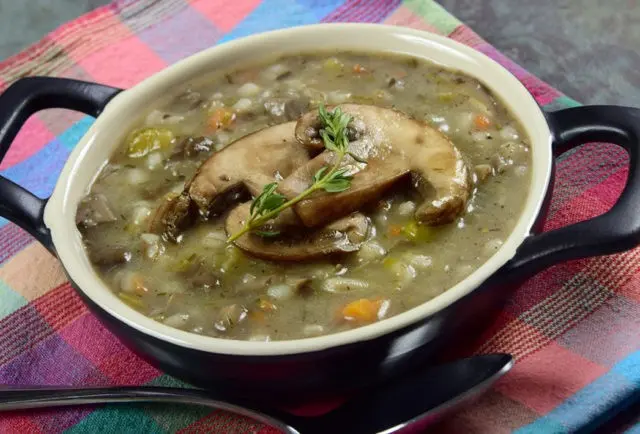
Talkers baked with meat and potatoes:
- Cut the pre-boiled mushrooms and arrange on a baking sheet greased with vegetable oil.
- Cut the meat into pieces and lightly beat off, put on the mushrooms.
- Peel the potatoes, cut into slices and put on top of the meat.
- Each layer must be salted and spices added to taste, smeared with sour cream.
- Place in preheated oven for 40-45 minutes at 180°C.
- Sprinkle grated cheese on top 5 minutes before cooking.
Fried talkers:
- Pre-boiled and chopped govorushki are placed in a heated frying pan, greased with vegetable oil.
- Add salt, pepper and spices to taste.
- Fry over low heat for 20-25 minutes.
- Add sour cream and simmer for another 5 minutes.
- Sprinkle with fresh herbs.
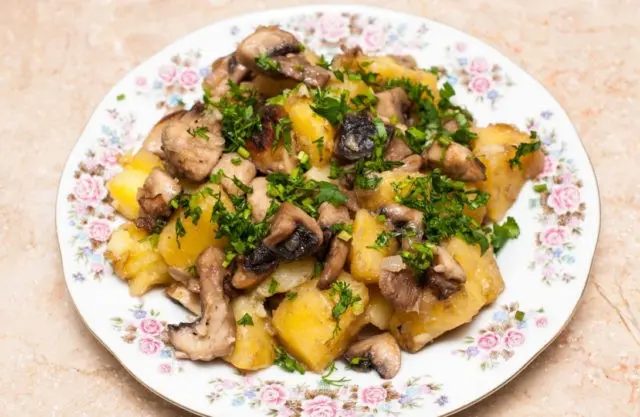
How to salt talkers for the winter
You can also salt or pickle talkers for the winter.
The most common hot pickling method:
- Wash the collected mushrooms, peel and boil for 30 minutes.
- Place boiled govorushki in a saucepan and pour hot clean water, put on fire.
- Add salt at the rate of 200 g per 1 liter of water.
- Boil for 40 minutes.
- Arrange talkers in banks.
- Prepare the brine: for 1 liter of water 1 tbsp. l. salt, garlic clove, dill and 2-3 black peppercorns. Boil the brine for 3-5 minutes.
- Pour the mushrooms with the resulting brine so that they are completely covered.
- Close jars and put in a dark cool place.
- After 10 days, the mushrooms are ready to eat.
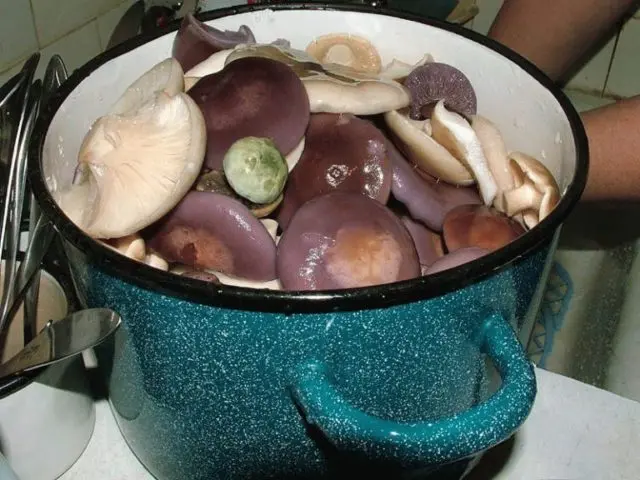
Conclusion
Photos and descriptions of talker mushrooms will help distinguish edible specimens from their poisonous counterparts. These mushrooms have a number of useful properties and contain a large amount of vitamins and important micro and macro elements. From them you can cook many delicious dishes, including preparations for the winter.










